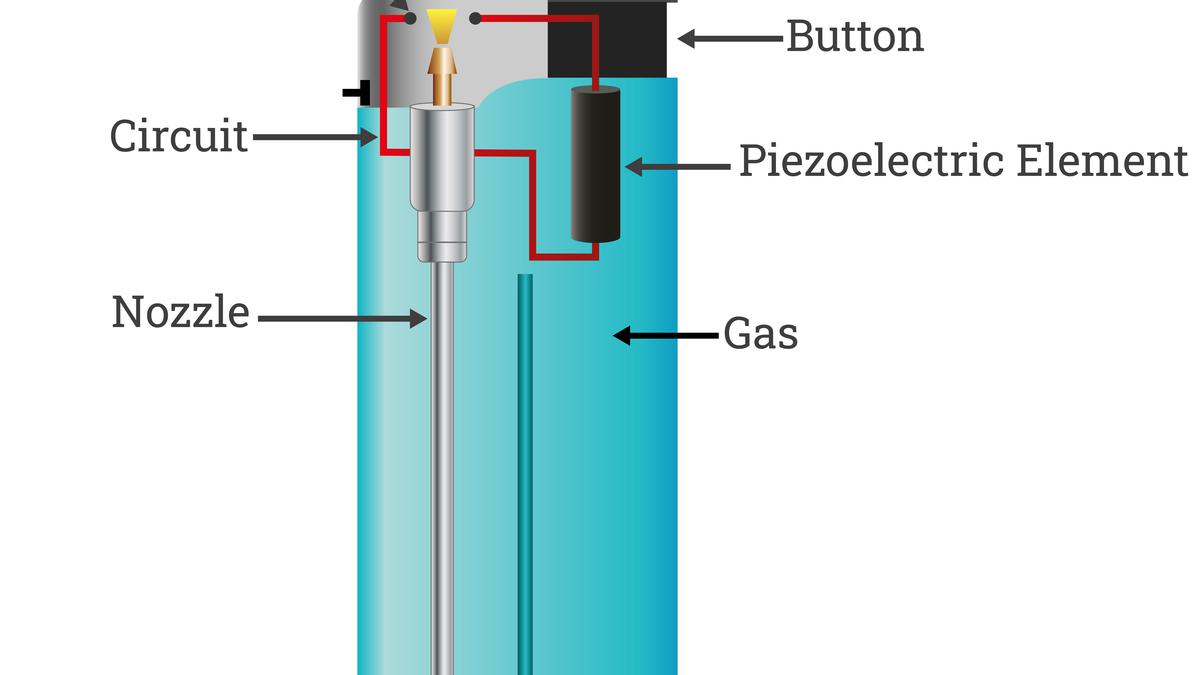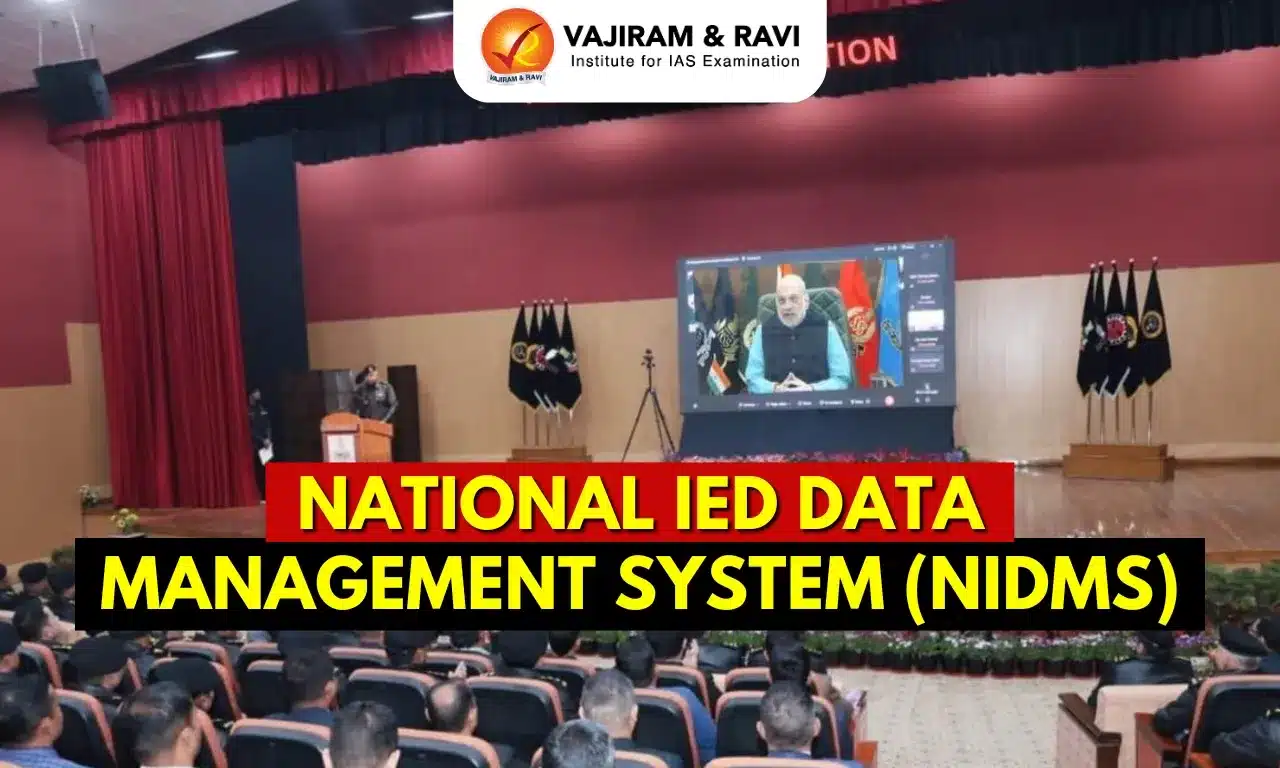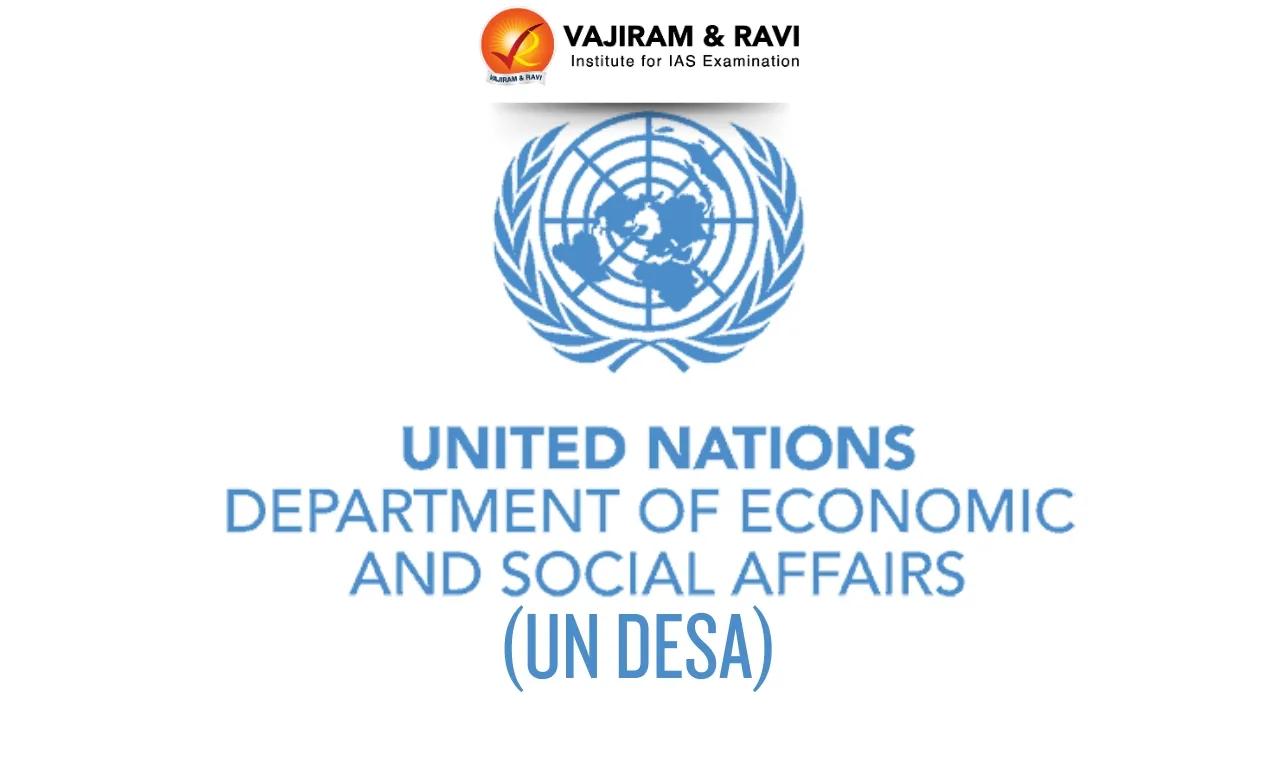About Piezoelectricity
- The term “piezoelectric” originates from the Greek words “piezein,” meaning ‘to squeeze’, and “elektron”, for amber – a material known for its association with static electricity.
- Piezoelectricity is a remarkable phenomenon whereby some materials – including quartz, ceramics such as lead zirconate titanate (PZT), and even certain biological substances like bone and the tendons – can generate an electric charge in response to mechanical stress.
- This property is the result of their unusual crystal structures.
- Usually, the charges on atoms in the molecules that make them up are symmetric on two sides of an axis.
- When some stress is applied, the molecule becomes distorted and the asymmetry of charges gives rise to a small electric current.
- Some materials also display an inverse piezoelectric effect, where the application of an electric current induces a mechanical deformation.
- Applications
- Both direct and inverse piezoelectric materials are widely used in pressure sensors, accelerometers, and acoustic devices – where their ability to convert mechanical signals into electrical signals is crucial.
- It is also used in quartz watches.
- Piezoelectric transducers are common in ultrasonic applications, such as intrusion detectors and alarms.
- Piezoelectric devices are employed at AF (audio frequencies) as pickups, microphones, earphones, beepers, and buzzers.
- In wireless applications, piezoelectricity makes it possible to use crystals and ceramics as oscillators that generate predictable and stable signals at RF (radio frequencies).
Q1) What is Quartz?
It is a widely distributed mineral of many varieties that consists primarily of silica, or silicon dioxide. It is a crystal that develops positive and negative charges on alternate prism edges when it is subjected to pressure or tension. The charges are proportional to the change in pressure.
Last updated on January, 2026
→ Check out the latest UPSC Syllabus 2026 here.
→ Join Vajiram & Ravi’s Interview Guidance Programme for expert help to crack your final UPSC stage.
→ UPSC Mains Result 2025 is now out.
→ UPSC Notification 2026 is scheduled to be released on January 14, 2026.
→ UPSC Calendar 2026 has been released.
→ UPSC Prelims 2026 will be conducted on 24th May, 2026 & UPSC Mains 2026 will be conducted on 21st August 2026.
→ The UPSC Selection Process is of 3 stages-Prelims, Mains and Interview.
→ Prepare effectively with Vajiram & Ravi’s UPSC Prelims Test Series 2026 featuring full-length mock tests, detailed solutions, and performance analysis.
→ Enroll in Vajiram & Ravi’s UPSC Mains Test Series 2026 for structured answer writing practice, expert evaluation, and exam-oriented feedback.
→ Join Vajiram & Ravi’s Best UPSC Mentorship Program for personalized guidance, strategy planning, and one-to-one support from experienced mentors.
→ UPSC Result 2024 is released with latest UPSC Marksheet 2024. Check Now!
→ UPSC Toppers List 2024 is released now. Shakti Dubey is UPSC AIR 1 2024 Topper.
→ Also check Best UPSC Coaching in India

















